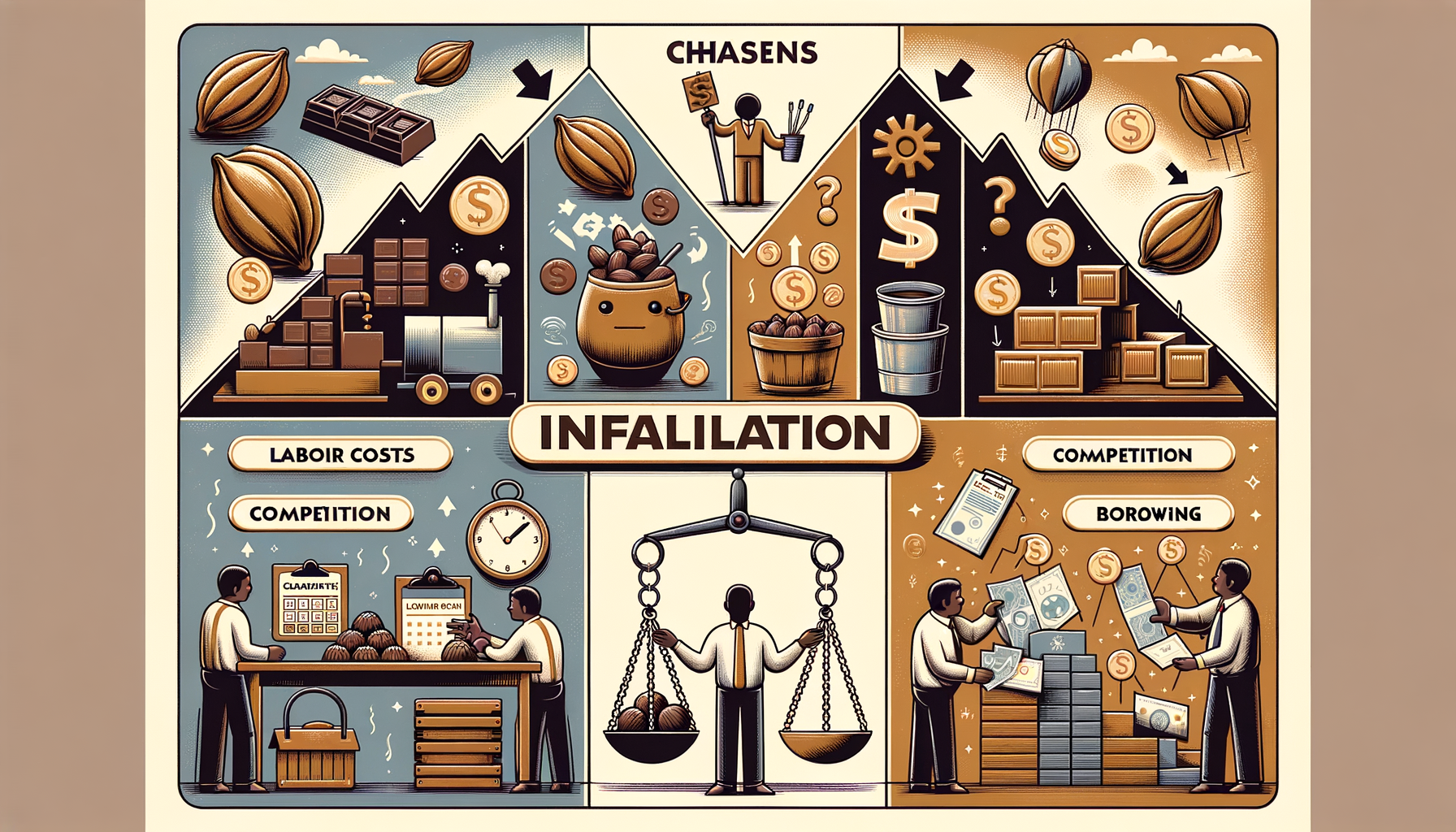“Understanding the Impact of Inflation on Small Businesses: A Comprehensive Guide”

In today’s volatile economic environment, small businesses face an array of challenges. However, among these challenges, ‘inflation’ sits right at the top. This invisible force is a ubiquitous part of business and the economy as a whole. Importantly, for small businesses, staying afloat and prospering amid the choppy waters of inflation requires a precise strategy, strong risk management, and a comprehensive understanding of inflation’s implications.
Let’s be clear about what inflation is. It’s the rate at which the general level of prices for goods and services is rising, thereby eroding purchasing power. If you remember your Economics 101 classes, you might recall that inflation is not inherently adverse. Moderate inflation is even regarded as a sign of a healthy economy. Yet, when inflation rates skyrocket, it puts a great deal of pressure on small businesses and their bottom lines.
Without further ado, let’s delve into understanding the massive effects of inflation on small businesses. But before examining potential strategies to cope, it is important to comprehend how inflation influences various aspects of a small business.
1. COST OF GOODS AND SERVICES:
In an inflationary environment, a small business owner’s costs are likely to surge. The cost of raw materials, merchandise, equipment, rental costs, and more can rapidly escalate. This increase is because suppliers also wish to keep their profit margins intact and hence, indirectly pass the inflation onto businesses in the form of higher prices. The delivery costs associated with these items can also uptick as fuel costs increase due to inflation.
2. COST OF LABOR:
Salary expectations usually rise during inflationary periods. This increase in wages is due to employees finding their purchasing power diminishing and thus needing more money to sustain their standard of living. Inflation also raises the costs of benefits tied to wages, like social security and certain types of insurance.
3. MARKET COMPETITIVENESS:
Higher costs of goods, services, and labor can pose competitive challenges for a small business. Price sensitivity might vary across sectors, but often customers aren’t thrilled about paying more for the same product or service. Therefore, if a small business responds to higher COGS by raising their end prices, it may risk losing customers to competitors who maintained their pricing structure.
4. CASH FLOW:
Cash flow, the lifeblood of any small business, gets pressured as costs rise due to inflation. Businesses may find themselves shelling out more money to keep their operations running smoothly. This phenomenon puts a strain on the enterprise’s working capital and can trigger cash flow issues if not handled effectively.
5. BORROWING COSTS:
The uncertainty associated with inflation can also sway interest rates. Central banks can increase interest rates to tame rampant inflation, making loans and credit more expensive. As a result, leveraging borrowed funds for expansion or operational needs can become more costly, impacting the business’s financial health.
6. FORECASTING:
Finally, inflation makes forecasting difficult. In an environment with unstable pricing, future revenue, and cost predictions become tricky. This impact can cause operational hiccups and distort business planning and budgeting.
Now that we understand the challenges imposed by inflation on small businesses, it’s time to explore effective strategies for coping and thriving during inflationary periods. While every business is unique and may require a distinct approach, the following strategies can serve as a helpful starting point:
1. HEDGE AGAINST INFLATION:
The antidote to the inflation poison is ‘hedging.’ By purchasing goods and services upfront or locking in prices on longer-term contracts, businesses can guard against future price increases. Adopting technological advancements can also provide a competitive edge and increase efficiency, thus reducing costs.
2. MANAGE INVENTORY:
Employing effective inventory management techniques can mitigate the impact of COGS during inflation. Inventory turnover should be brisk enough to avoid holding stock while prices are increasing. Yet, it shouldn’t be too quick to avoid running out of stock when prices are high.
3. CREATE A STRATEGIC PRICING POLICY:
Shifting higher costs onto the consumer through price hikes is a delicate balancing act. Pricing decisions should be strategic, taking into account competition and customer response. Price increments can be gradual or bundled in a way that offers perceived value to the customers.
4. DEVELOP AND MAINTAIN CUSTOMER LOYALTY:
A loyal customer base is the beacon of hope during inflationary times. They are more likely to accept price increases and continue patronizing your business. Prioritize customer satisfaction, nurture relationships, and provide superior service to foster loyalty.
5. BE PRUDENT WITH EXPENSES AND INVESTMENTS:
Cash flow management is imperative during inflation. Regularly review your expenses and find areas for cost-saving. Also, exercise caution when making significant investments. Needless to say, borrowing should be moderated, considering the likely rise in interest rates.
6. PLAN AHEAD:
Possess a robust business plan. Regular forecasting of income and expenses can help you spot potential issues before they wreak havoc.
In conclusion, inflation is a ghostly goliath that small businesses have to wrestle with, especially during turbulent economic times. Understanding how inflation impacts various facets of your business, and strategically addressing these areas, can help make your business inflation-resistant. Remember, the key lies in planning, flexibility, and resilience to adapt to the changing economic conditions. With a well-founded game plan and dynamic strategy, small businesses can not only survive periods of high inflation but may even potentially thrive. Adopting a proactive approach can help transform the threat of inflation into an opportunity to reassess, refine, and reinforce business strategies.

Recent Comments